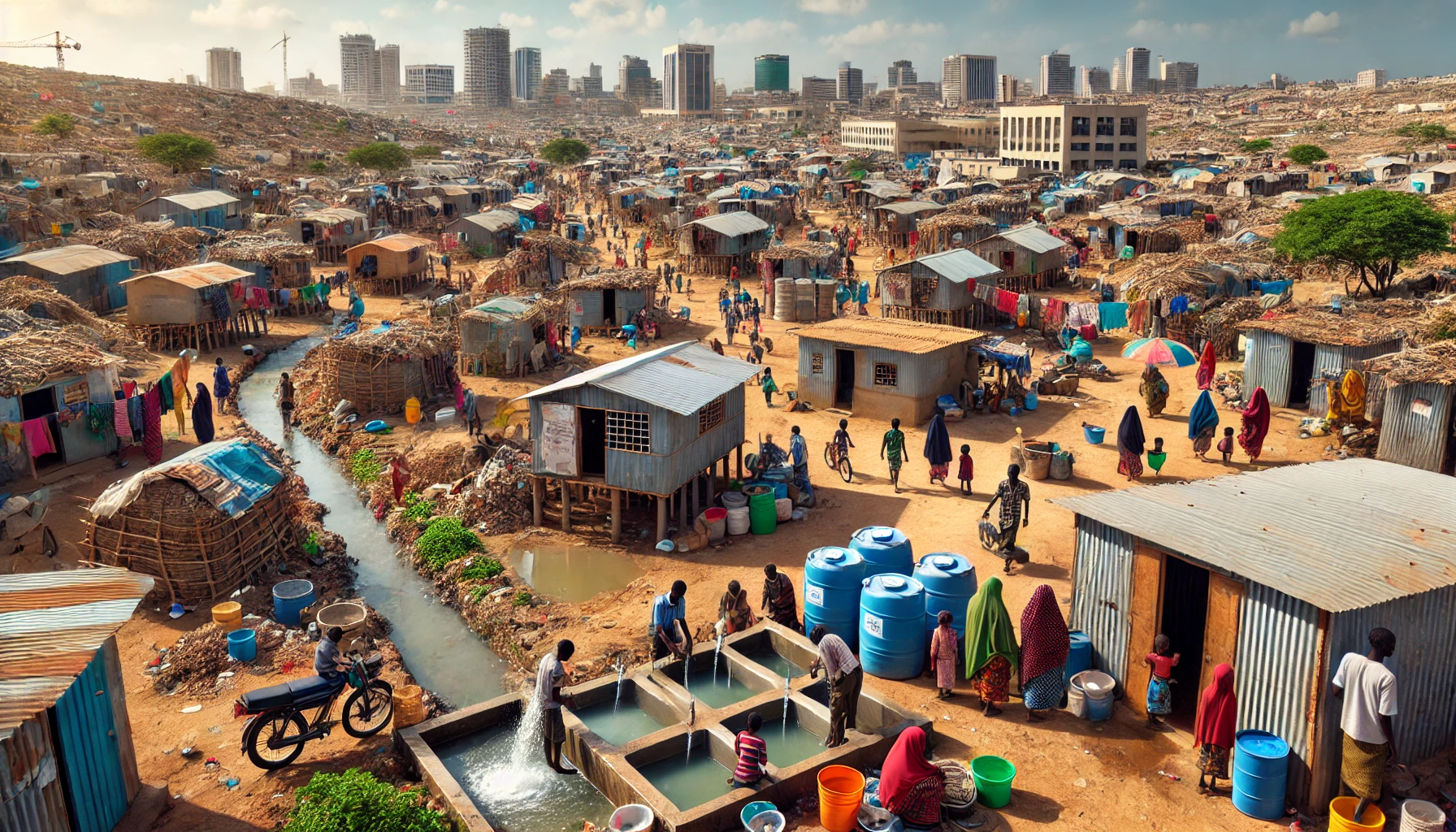Empowering Somalia’s Displaced: Solutions for Better Living Conditions and Sustainable Futures
Displaced populations in Somalia face severe challenges due to conflict, economic hardship, and climate crises, necessitating comprehensive solutions in urban planning, social protection, healthcare, education, and employment to improve their living conditions and ensure sustainable futures. Coordinated efforts are crucial to integrating these communities into broader development plans and addressing their specific needs.

- Country:
- Somalia
The World Bank's latest report on Somalia sheds light on the severe challenges faced by displaced populations due to the intertwined impacts of conflict, economic hardship, and climate crises. Based on the findings from the Somalia Displacement Phone Survey, the report paints a stark picture of the living conditions and experiences of internally displaced persons (IDPs), refugees, and refugee returnees across the country.
Somalia’s Displaced: A Nation in Crisis
Somalia is home to over 38,000 refugees and asylum seekers from various countries, while internal displacement primarily results from consecutive failed rainy seasons, forcing many to live in dire conditions with limited access to essential services. The Somali government has been actively working to address these issues through adherence to international laws and the development of local solutions. Somalia is a signatory to several key international conventions and has enacted national policies such as the National Durable Solutions Strategy (NDSS) and draft Refugee and IDP Acts, aimed at improving the situation for displaced populations.
Living Conditions: A Grim Reality
The survey's findings reveal that displaced populations generally face worse conditions than host communities on nearly every indicator. Displaced households tend to be larger and include more children, which correlates with higher levels of vulnerability and poverty. These households are more likely to be headed by men and have a higher prevalence of disabilities among heads of households. Access to improved housing is significantly lower among IDPs, particularly those in settlements where the majority live in shelters constructed from unimproved materials. Although there is a high level of access to improved water sources, the quantity is often insufficient, and shared sanitation facilities are prevalent, which increases the risk of disease and sexual assault.
Healthcare and Education: The Unmet Needs
Healthcare access is another major challenge, with fewer than half of those who fell ill able to access medicine or medical services due to cost and distance. While vaccination rates against COVID-19 have improved, they remain low compared to global rates. The education sector faces significant challenges, with a high proportion of children out of school, particularly girls. The main barriers to education include the cost of schooling and the lack of available schools. Employment opportunities are limited, with fewer than 40% of respondents having worked in the week before the survey. The lack of skills and documentation are the main barriers to employment, particularly among Somali households. For refugees, language barriers and discrimination also play significant roles. The primary sources of livelihood for host communities, IDPs, and refugee returnees are agriculture-related, while refugees primarily rely on wage employment.
Pathways to Improvement: Key Recommendations
The report highlights several critical issues and recommends comprehensive and area-based solutions tailored to the needs of forcibly displaced persons. It emphasizes the importance of improved urban planning, social protection policies, and integrating displaced populations into national surveys to ensure timely and comparable data. Targeted support for larger households, households with high dependency ratios, and those with heads facing disabilities is crucial. Expanding access to improved housing, water, and sanitation is essential to alleviate some of the living condition challenges faced by displaced populations. In the health sector, reducing barriers by maintaining regular supplies, implementing interventions directed at cultural norms, and lowering the cost of medical treatment can increase both demand for and access to healthcare. Public-private partnerships in healthcare provision for displaced persons should also be developed. Addressing financial barriers to education through financial aid, scholarships, and measures to avoid teen pregnancy and early marriage is vital. Additionally, programming to address girls’ domestic responsibilities can help improve school attendance.
Building a Sustainable Future
The report also calls for enhancing employment opportunities through skills development and providing necessary documentation. Strengthening agricultural practices, increasing access to land, and providing training on efficient techniques and high-yielding varieties can improve livelihoods. Recognizing and supporting self-employment in policy frameworks, improving access to documentation for economic and social transactions, and including IDPs in public works or the construction sector can also provide short-term employment opportunities. Integrated graduation programs that combine safety nets, life skills training, and support for income-generating activities offer significant benefits. Moreover, the report underscores the need for social cohesion and improved security perception.
Expanding inclusive community-based planning, particularly in protection, policing, and access to justice, can enhance local integration of refugees and boost their sense of security. Establishing and scaling up social safety net programs, such as cash transfers, vouchers, and food assistance, can mitigate the impacts of shocks like droughts on vulnerable households. Providing safety, peace, basic services, and livelihood opportunities in refugees' countries of origin can facilitate voluntary repatriation and enable them to rebuild their lives upon return. Investing in rural resilience, improving service delivery, and strengthening grievance redress mechanisms are also recommended to address the challenges faced by displaced populations and ensure sustainable resolutions to their displacement. The World Bank's report highlights the urgent need for coordinated efforts to improve the living conditions of displaced populations in Somalia, emphasizing the importance of integrating these communities into broader development plans to ensure their sustainable future.
- FIRST PUBLISHED IN:
- Devdiscourse










